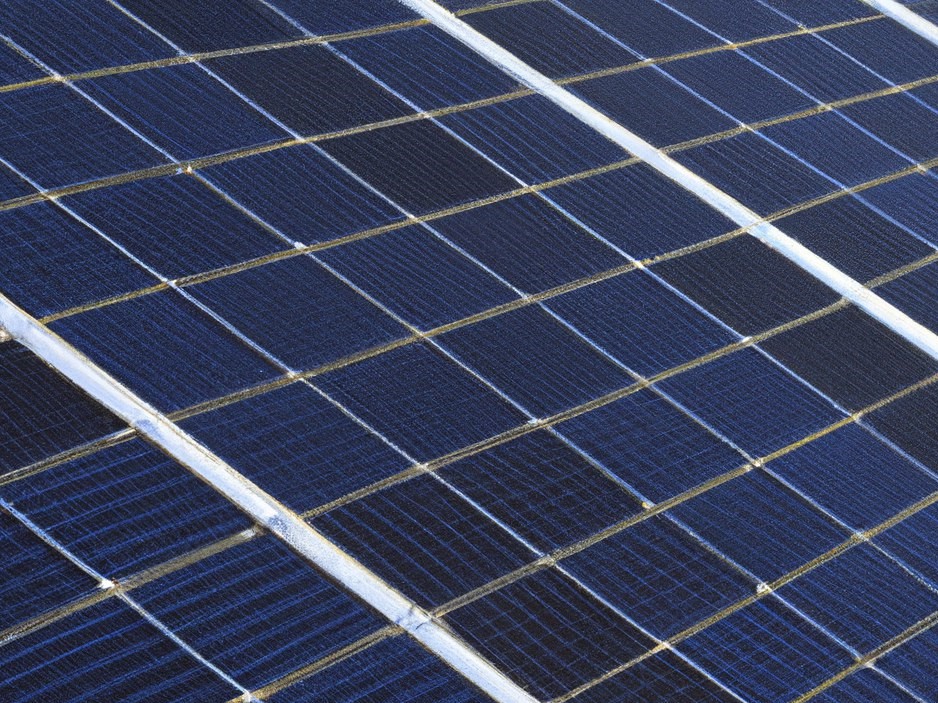
Imagine a world where we tap into the sun’s clean, boundless energy, powering our lives without leaving a trace of carbon emissions. This vision isn’t some far-off fantasy; it’s an achievable reality through solar energy. In this article, let’s embark on an enlightening journey to explore the incredible potential of solar power, uncovering its numerous benefits, diverse applications, and how it becomes the driving force towards a greener, more sustainable future for our beloved planet. From its eco-friendly nature to economic advantages, we’ll delve into the reasons why solar energy is a game-changer. Whether it’s empowering homeowners with residential installations or harnessing the sun’s power through vast solar farms, we’ll witness the widespread applications that make solar energy a beacon of hope for a brighter tomorrow. So, let’s set forth on this captivating voyage to discover the wonders of solar energy and the positive impact it can make on our lives and the environment, shaping a cleaner, healthier world for generations to come.
The Sun’s Endless Bounty
The sun, often referred to as that fiery ball of energy in the sky, has been an awe-inspiring celestial body for billions of years, and its significance in our lives cannot be overstated. For eons, it has served as the ultimate source of light and warmth, making life on Earth possible. However, its true potential as an energy powerhouse is just starting to be fully realized.
Every second, the sun radiates an incomprehensible 3.8 x 10^26 joules of energy, a mind-boggling amount that surpasses human imagination. To put it into perspective, this is more energy than what humanity consumes in an entire year. Capturing even a fraction of this boundless energy could mark a paradigm shift in our energy landscape.
Unlike finite fossil fuels that require extensive mining and drilling operations, solar energy offers an unlimited and renewable resource that ensures a constant supply for generations to come. The sun’s rays are an untapped treasure trove of clean and sustainable power, waiting to be harnessed for our benefit.
With the increasing focus on transitioning to greener energy alternatives, solar power stands at the forefront of this revolution. As technology continues to advance, solar panels become more efficient and affordable, making them accessible to a wider audience. Embracing solar energy not only helps combat climate change but also reduces our dependence on fossil fuels, promoting energy independence and a brighter future for our planet.
As we gaze upon the celestial marvel that is the sun, we are reminded of the immense potential it holds to revolutionize our energy paradigm. By embracing solar energy and investing in clean technologies, we take a significant step towards creating a sustainable and thriving world for ourselves and generations to come. The sun’s endless bounty beckons us to look up and capture its gifts, ensuring a brighter, greener future for all.
How Solar Energy Works

If you’ve ever marveled at those sleek solar panels adorning rooftops, you might have wondered how they harness the sun’s power.
Solar energy is harnessed from the sun’s rays and converted into usable electricity through various technologies. The process involves several steps:
Solar Panels: the key component of solar energy systems is solar panels, also known as photovoltaic (PV) panels. These panels consist of many solar cells made of semiconductor materials, usually silicon. When sunlight hits these cells, it excites the electrons, creating a flow of electricity.
Photovoltaic Effect: the photovoltaic effect is the fundamental principle behind solar energy generation. It occurs when photons from sunlight strike the surface of the solar cells, dislodging electrons from the atoms in the semiconductor material. This creates an electric current as the electrons move through the cell.
Direct Current (DC) Electricity: the electricity generated by solar panels is in the form of direct current (DC), which means the electrons flow in one direction. However, most household appliances and electrical devices use alternating current (AC) electricity.
Inverter: to make the electricity suitable for household use, an inverter is used to convert the DC electricity from the solar panels into AC electricity. This conversion ensures that the electricity matches the standard power supply used in homes and businesses.
Electricity Usage: once the solar panels have generated AC electricity through the inverter, it is fed into the electrical panel of the building. From there, the electricity can be used to power various appliances and devices, offsetting the need for electricity from the grid.
Net Metering (Grid-Tied Systems): in grid-tied solar systems, excess electricity generated by the solar panels can be sent back to the electrical grid. This process is known as net metering. When the solar panels produce more electricity than the building requires, the excess is fed into the grid, and the owner receives credits or compensation for the surplus electricity.
Battery Storage (Optional): some solar energy systems incorporate battery storage, allowing excess electricity to be stored for use during periods of low sunlight or at night. This enables greater energy independence and resilience during power outages.
Solar energy is a renewable and sustainable source of power that can significantly reduce greenhouse gas emissions and dependence on fossil fuels. As technology advances and becomes more affordable, solar energy is increasingly becoming a viable and environmentally friendly solution for meeting our energy needs.
Benefits of Solar Energy
One of the most significant advantages of solar energy is its green credentials. Unlike fossil fuels that emit harmful greenhouse gases, solar energy generates zero emissions during operation. By switching to solar power, we can reduce our carbon footprint and combat climate change, fostering a healthier planet for future generations.
Investing in solar energy may seem like a significant upfront cost, but it’s a wise long-term investment. Once the solar panels are installed, the sun provides its energy for free. With lower electricity bills and potential incentives, the financial benefits become evident over time.
Solar energy empowers individuals and communities to take charge of their energy needs. By generating electricity on-site, solar users become less reliant on centralized power grids, ensuring energy independence and greater resilience during power outages.
The solar energy industry is a catalyst for economic growth, leading to job creation across various sectors. From manufacturing solar panels to installation and maintenance, the industry drives employment opportunities while paving the way for a green economy.
Solar Energy Applications
Residential solar installations empower homeowners to generate their electricity, offering a newfound independence from conventional utilities. As solar technology becomes increasingly popular, governments and organizations around the world are incentivizing its adoption through attractive rebates and benefits. These incentives aim to make solar energy more accessible and affordable for homeowners, driving the transition to cleaner and more sustainable energy sources. Embracing solar power not only lowers electricity bills but also contributes to reducing carbon emissions and mitigating the impact of climate change. With each rooftop solar panel, we move closer to a future where renewable energy becomes the norm, benefiting both individuals and the planet alike.
Large-scale solar farms are an impressive testament to our ability to harness the sun’s energy on a grand scale. By strategically deploying rows of solar panels across vast open spaces, these farms efficiently capture sunlight and convert it into clean electricity. Their substantial energy production makes a notable contribution to the overall power supply, easing the load on conventional power plants that rely on fossil fuels.
One of the most compelling advantages of solar farms is their positive impact on the environment. By generating electricity from a renewable source, they help reduce greenhouse gas emissions and combat climate change. As we embrace these sustainable energy solutions, we move closer to building a greener, more sustainable future for generations to come.
The advent of portable solar solutions has revolutionized how we stay charged on the move. From solar-powered chargers that effortlessly juice up our electronic devices to backpacks equipped with solar panels, these innovative solutions offer unrivaled convenience. By harnessing the power of the sun, we free ourselves from the constraints of traditional charging methods and reduce our dependence on disposable batteries. These portable solar gadgets not only empower us with renewable energy but also play a significant role in promoting a sustainable lifestyle. Embracing these eco-friendly alternatives, we can embark on our journeys with confidence, knowing we are treading lightly on the planet while staying connected.
Challenges and Future Prospects
While solar energy presents a myriad of benefits, it does pose a notable challenge due to its intermittent nature. As the sun sets and weather conditions change, energy production from solar panels fluctuates, leading to periods of reduced power generation. To address this issue and unlock the full potential of solar energy, energy storage solutions come to the forefront as a crucial solution.
Advanced battery technologies play a pivotal role in bridging the gap between energy production and demand. During times of abundant sunlight, excess energy can be stored in these batteries. Then, when solar panels are less productive or during peak energy demand periods, the stored energy can be released, ensuring a stable and reliable energy supply.
By incorporating energy storage into solar systems, we enhance their efficiency and resilience, making them more dependable even in adverse conditions. This paves the way for a future where solar energy becomes an even more integral part of our energy infrastructure, driving us towards a cleaner and more sustainable world. As technology continues to progress, energy storage solutions will evolve, further reinforcing solar energy’s position as a game-changer in our journey towards a greener future.
Continued research and development in the field of solar energy hold the key to unlocking its full potential. As scientists and engineers strive to enhance solar panel efficiency, we can expect significant advancements that will revolutionize the way we harness the sun’s energy. By fine-tuning the materials and design of solar panels, we can maximize their ability to convert sunlight into electricity, making them even more productive and cost-effective.
Moreover, ongoing efforts to reduce production costs will play a crucial role in making solar energy accessible to a broader population. As economies of scale come into play and manufacturing processes become more streamlined, the initial investment in solar installations will become more affordable for homeowners and businesses alike.
Breakthroughs in solar technology are not only about boosting efficiency and affordability; they also pave the way for innovative applications. From solar-powered vehicles to integrating solar panels into building facades, the possibilities are vast, and the future looks promising.
 As solar energy continues to gain momentum as a sustainable energy source, it holds the potential to reshape our world’s energy landscape. By embracing and investing in these advancements, we can accelerate the transition to a cleaner and more sustainable energy future. With each step forward in research and development, we edge closer to a world powered by the boundless and renewable energy of the sun.
As solar energy continues to gain momentum as a sustainable energy source, it holds the potential to reshape our world’s energy landscape. By embracing and investing in these advancements, we can accelerate the transition to a cleaner and more sustainable energy future. With each step forward in research and development, we edge closer to a world powered by the boundless and renewable energy of the sun.
Solar energy, with its boundless potential, has emerged as a beacon of hope in our relentless pursuit of sustainable and clean energy solutions. The sun, nature’s most brilliant source of power, holds the key to a brighter, greener future for our planet. It is a future where our air is pure, electricity bills are reduced, and our environment thrives in harmony.
Embracing solar energy is more than a choice; it is a powerful statement of our commitment to a sustainable world. As we harness the sun’s rays to generate clean electricity, we reduce our reliance on fossil fuels and curb harmful emissions, mitigating the impacts of climate change.
Moreover, the adoption of solar energy translates into tangible benefits for individuals and communities. Lower electricity bills offer financial relief, while energy independence grants us greater control over our power needs.
Let us unite under the sun’s warm embrace and collectively embrace solar energy as the path to a brighter tomorrow. With every solar panel installed, we take a giant leap toward a future where nature’s generosity sustains us all. So, let’s join hands and bask in the glow of this transformative energy source, ensuring a greener, healthier planet for generations to come.
